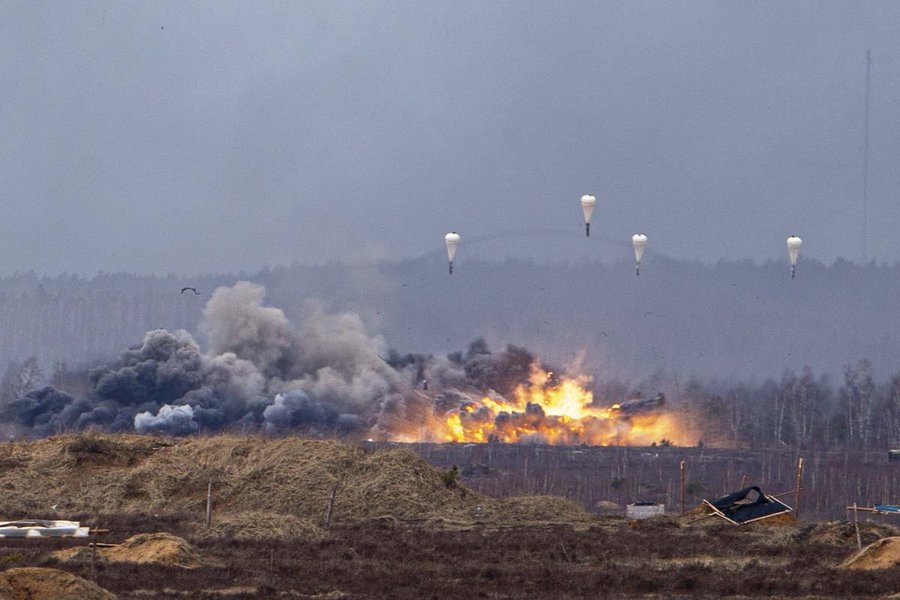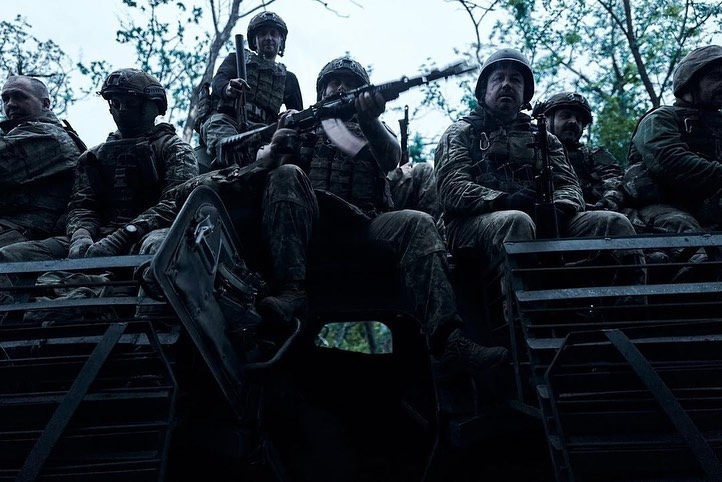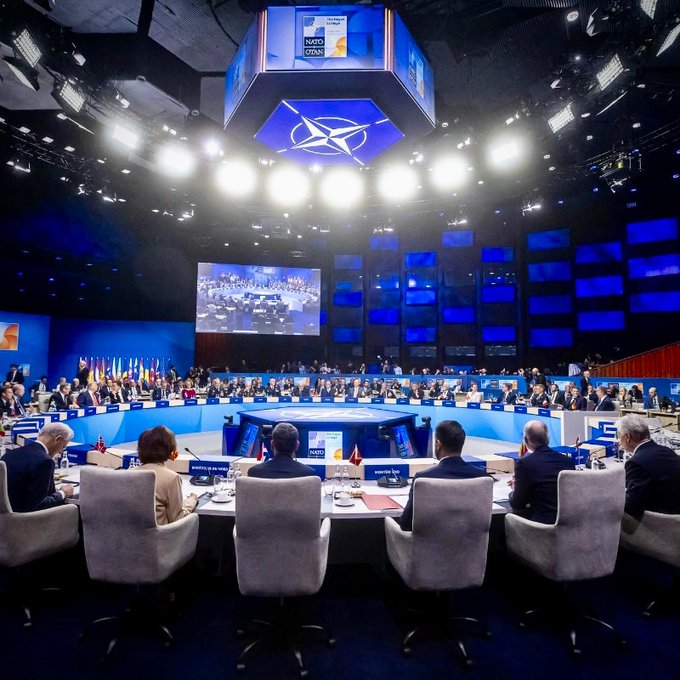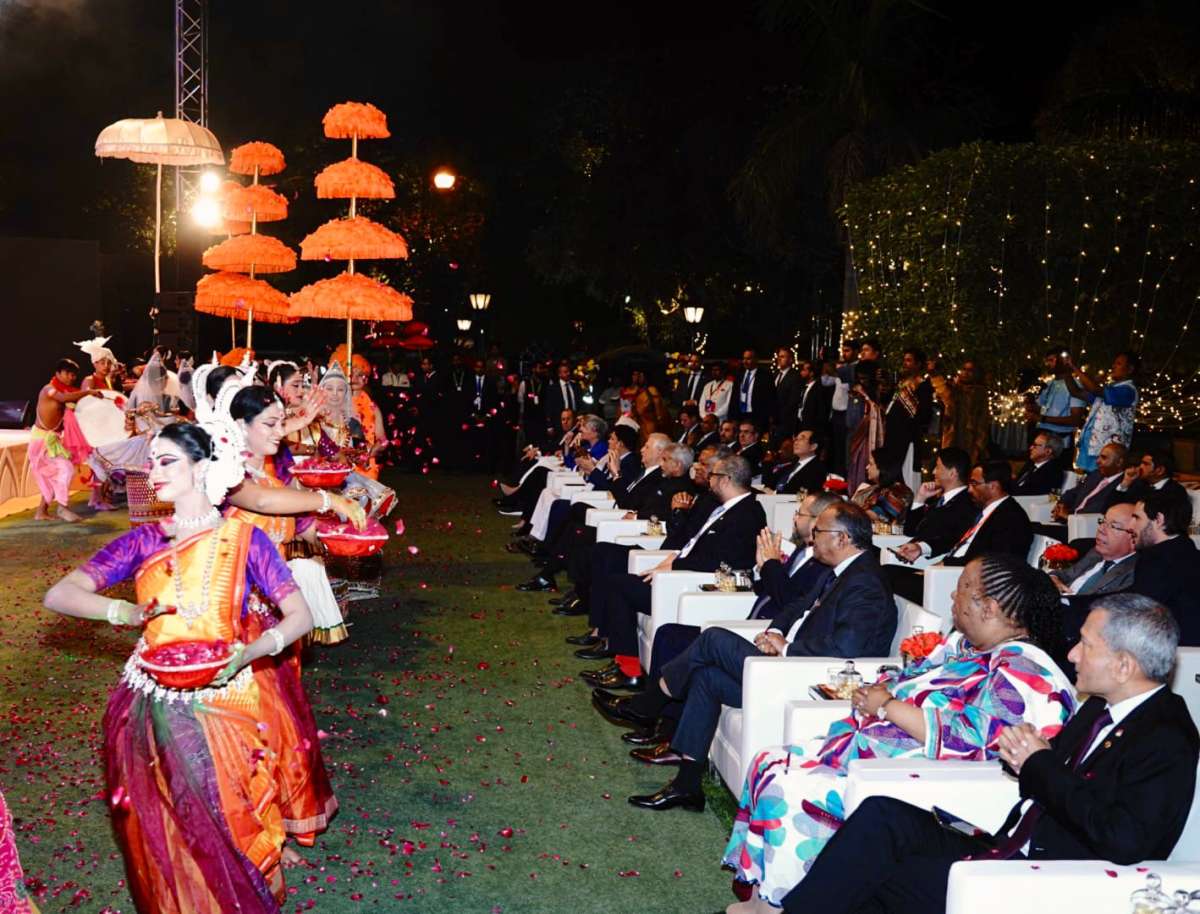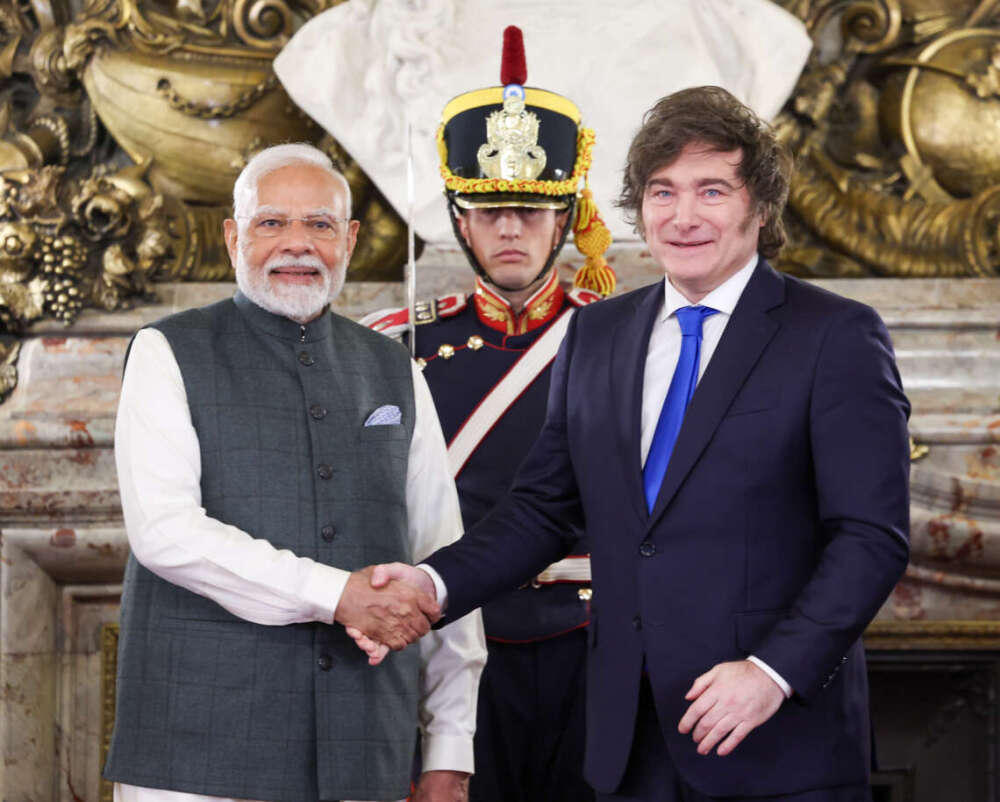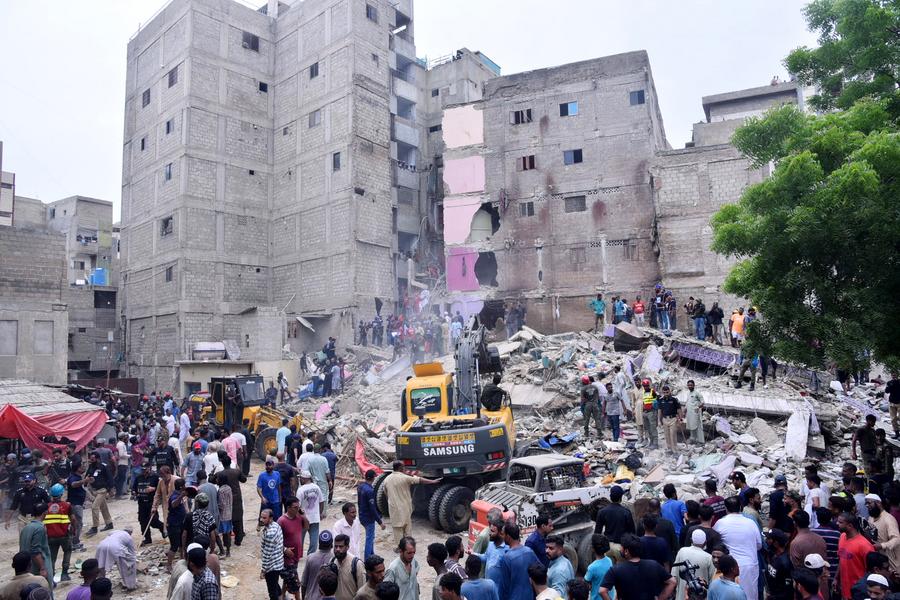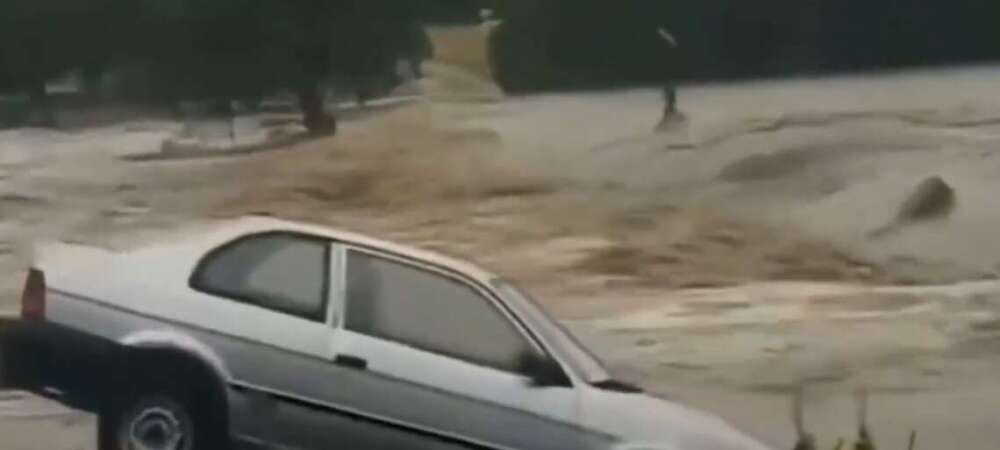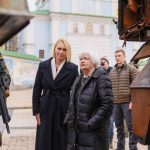It makes all strategists wonder if the West is treating Russian warnings as bluff or a cornered Russia may press the wrong nuclear button, if NATO continues to take Putin for granted and goes ahead catering to Zelensky’s unending wish list? … writes Major General S.B. Asthana
As the war in Ukraine completed one year last week, both sides put up a brave front, reiterating their resolve to carry on, blaming the other side for the conflict, and engaging in greater miscalculations with a hope that a little extra push can put them in a stronger position to dictate terms to the other side.
However, chasing such a mirage increases the risk of an unprecedented escalation by ignoring serious warnings from both sides. After a surprise stopover in Kiev announcing $460 million in military aid, US President Joe Biden made a strong pitch in Poland for support for Ukraine, despite the commotion caused by the ongoing Russia-China military drill in South Africa.
This was in response to Russian President Vladimir Putin’s announcement that he would suspend participation in New START, the only remaining major nuclear arms control treaty with the US, in his annual state of the nation address on February 21.
As the US-led NATO, fighting a proxy war on the shoulders of Ukraine President Volodymyr Zelensky, announced sending battle tanks and long-range offensive weapons, the sensitivity to the risk of nuclear escalation is not hidden, as President Biden said no to fighter jets and asked Russia to respect the last of the nuclear pacts with the US.
NATO is divided on fighter aircraft support, additional sanctions, and swift inclusion of Ukraine into EU, leave aside NATO’s bid, which first led to Zelensky’s showdown with Putin.
Even with NATO’s information campaign reiterating Ukraine’s victory, attaining an end state as it existed before February 24, 2022 must be considered nothing less than a pipe dream for Ukraine.
Russians have picked up momentum in the eastern region to speed up their gains before tanks and other offensive weapons arrive in Ukraine, besides the Stalingrad vows on the 80th anniversary of the Soviet victory in World War II, with a gentle reminder that response to tanks may well be in other domains.
With the heavy burden of economic cost and casualties, Russia too is struggling with achieving its desired end to the conflict. It makes all strategists wonder if the West is treating Russian warnings as bluff or a cornered Russia may press the wrong nuclear button, if NATO continues to take Putin for granted and goes ahead catering to Zelensky’s unending wish list?
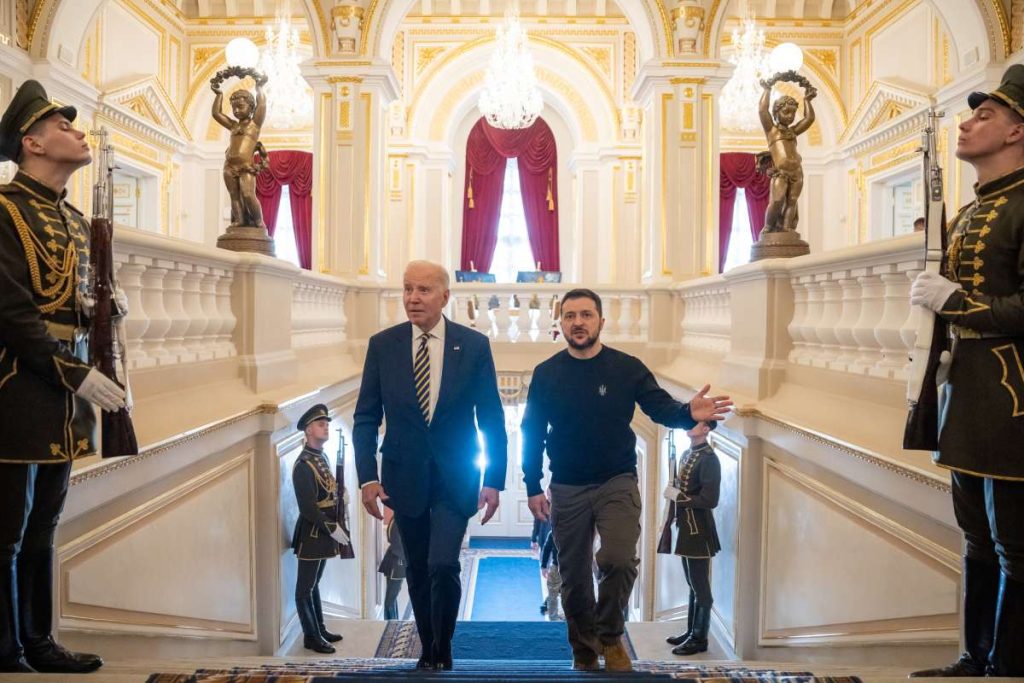
The big power contestation in Ukraine has few stark realities which both sides are hesitating to accept.
First, Russia with its large arsenal of nuclear weapons and hypersonic missiles under Putin will not get annihilated/decisively defeated without using any of these weapons. Second, the US will not risk the annihilation of Washington/New York to save Zelensky/Poland.
Third, Russia will not be able to annihilate Ukraine supported by NATO without a serious internal breakdown, and holding on to captured territory without local support will be a long-term challenge.
Fourth, Europe will not be more secure and prosperous, as it was before February 2022, as it did not pay heed to Russian security concerns and fell prey to American design of cutting off its dependency on Russia.
With no clear understanding of the ultimate goal that either side intends to achieve to put an end to the war, the dimensions of war are growing to encompass targeting dual-use key infrastructure, the energy grid, covert operations, an expanded information war, and a psychological offensive.
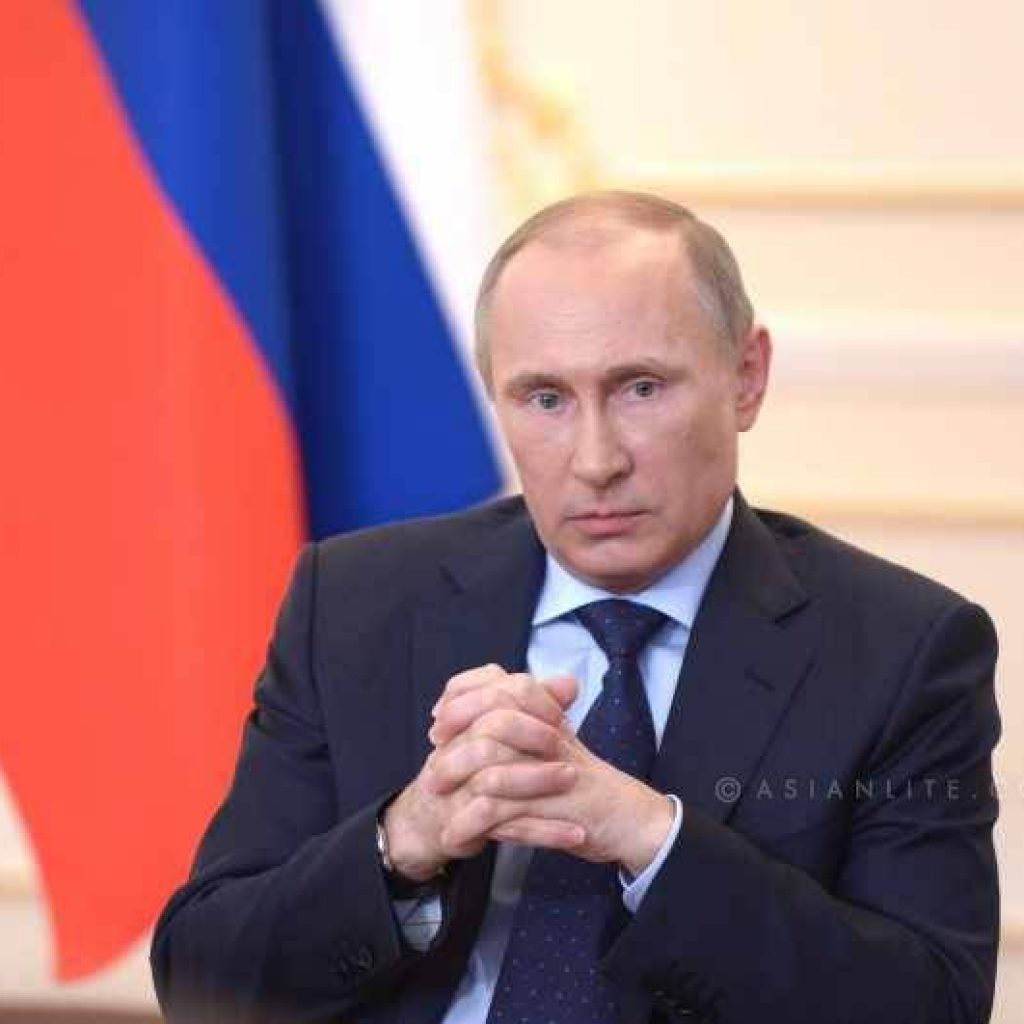
Russian Calculations
In the context of the realities mentioned above, Russian calculation is based on the premise that NATO will stop short of nuclear escalation; hence nuclear references have credible deterrence value, as NATO hasn’t openly admitted its direct involvement, notwithstanding its experts operating in Ukraine under the garb of volunteers/contractors.
Russian calculation of freezing Europe in winters has outlived its currency as Europe has finally survived existing winter with reduced energy supply from Russia.
Heavy casualties of men and material, economic setback due to sanctions, and inadequate inflow of war material from outside has taken its toll in the last one year, straining its surge capability of defence production to sustain war.
Surely, Russia seems to have miscalculated/under-estimated Ukraine’s resolve to defend itself and NATO’s resolve to support Ukraine so far.
The fresh supply of weapons can adversely impact its ongoing operations; hence, Russia’s strategy to speed up the offensive by capturing important communication hubs such as Bakhmut, before newly-promised tanks, armoured vehicles, air defence equipment and Ground Launched Small Diameter Bomb (GLSDB) with longer ranges (each worth US $2.2 billion) are effective in the battlefield, makes sense.
Russia is nowhere close to achieving its strategic aim of liberating the entire Donbass region and southern Ukraine to join up with Transnistria to landlock Ukraine. However, consolidating to retain its gains with renewed offensive, and efforts to improve its territorial disposition for better end state on conflict termination, seem to be a practical approach for Russia.
From the Russian point of view, Ukraine’s energy grid and essential services are as much legitimate targets as the Russian bridge to Crimea or Nord Stream pipelines are; hence, standoff attacks on it will continue to be more impactful than casualty-prone close combat operations in pro-Ukrainian areas.
Russia knows its limitations in economic, diplomatic, information warfare, and political warfare, which are heavily skewed in favour of the US-led NATO and Ukraine and the collective conventional might of NATO is stronger than its residual combat power; hence, the option to use nuclear weapons, in case of existential threat, will continue to be a powerful tool to prevent NATO from entering into a contact war with Russia in the future too.
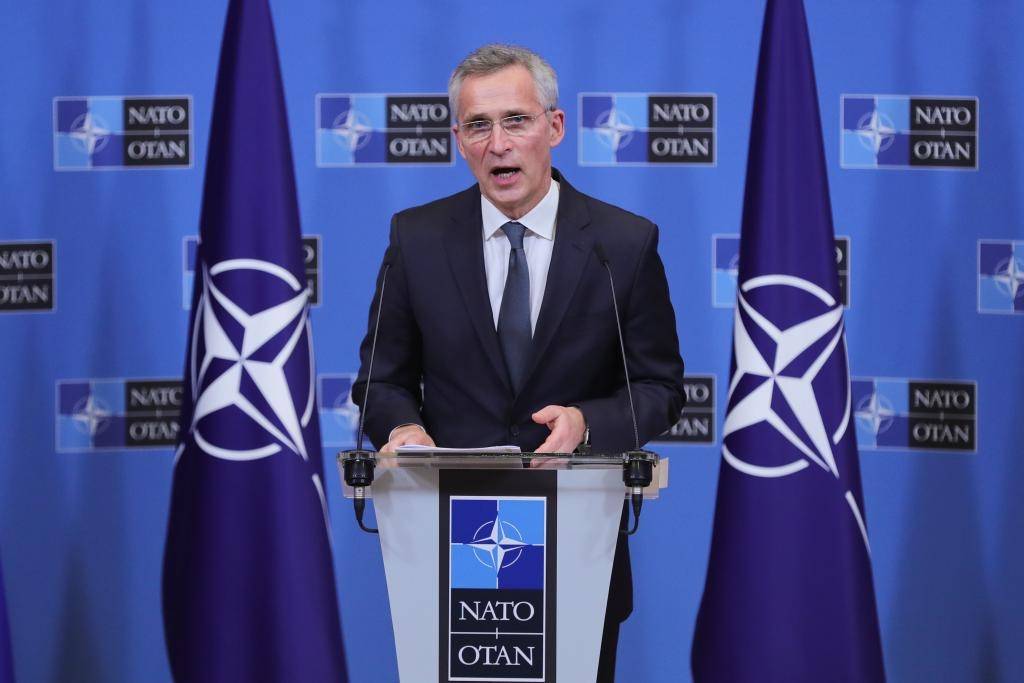
Strategy of US-led NATO
The Munich Conference earlier this month revealed that NATO is caught in a quagmire wherein it would like the war to be confined to Ukraine, for which it has no choice but to support it ‘for as long as it takes’.
It can’t afford any spillover of war to any NATO country, as that will imply existential threat to Russia leading it to an awkward choice of nuclear catastrophe or selectively shying away from NATO’s security obligations to the affected members as the US may not be ready to risk Washington/New York to save Poland/Ukraine.
NATO, therefore, echoes that Russia must not win; hence, boosting Ukraine’s will to continue fighting by creating a hope of winning an unwinnable war seems to be its calculation with a willing Zelensky to do so.
NATO is incrementally upgrading the military support to Ukraine as per the wish list of Zelensky up to the point of weakening Russia to the extent that it doesn’t remain in a position to attack any NATO member in the conventional domain, despite leakages due to corruption in Ukraine.
The fact that NATO hasn’t responded to the ‘Wings for Freedom’ request of Zelensky is a case in point. The argument of supplying offensive weapons for defending purposes to Ukraine is unlikely to be bought by Russia, which will view it as an escalation.
NATO, however, seems to be testing Putin’s patience with a calculation that he too may shy away from escalating the war to the nuclear dimension, resulting in greater staying power for Zelensky.
The US-led NATO’s calculation of the meagre $2 trillion economy of Russia crumbling against the collective $30 trillion economic might of NATO through crippling sanctions hasn’t worked.
Russia has not only endured the sanctions, but according to the IMF, it is expected to grow by 2.1 per cent in 2024, in comparison to America’s 1 per cent, EU’s 1.6 per cent, and the UK’s negative growth.
It goes to prove that resource-rich Russia will find buyers for its raw materials irrespective of sanctions. The biggest hypocrisy is that the US and EU continued to buy more nuclear fuel from Russia in the last one year, even as they announced stricter sanctions to impress Zelensky!
That the idea of isolating Russia has met with only limited success is evident from the growing Russia-China-Iran-North Korea nexus and the ongoing Russia-China-South Africa military drill that has left NATO sulking.
Purely from the US point of view, it has achieved some of its objectives.
Nord Stream 1 and 2 have been successfully knocked off, if Seymor Hersh is to be believed, and Russia’s influence over the EU is diminishing. The EU is compelled to keep purchasing its expensive oil and military equipment from the US and major contracts to rebuild Ukraine are likely to be lucrative gains.
In the context of waging a ‘Shadow War’, the suffering of the Ukrainian people become conceptually irrelevant for the US in winning without fighting, if interpreted as per the writings of Sean McFate.
The gains, however, are not without long-term costs to the US. The global race to adopt trading methodology independent of dollars is growing at the fastest pace. BRICS is looking for a common currency and its own expansion, just like the Shanghai Cooperation Organisation (SCO).
The EU’s over-reliance on the US for security since World War II has left it with no choice but to give up its economic and energy interests to seek the security shelter of the US. Some countries like Hungary are already expressing their opposition to providing Ukraine with unending material support.
Reeling under unprecedented inflation, and burdened with millions of refugees, the EU will have to raise its defence budget, besides surrendering some sovereign decisions to the US, to counter unfriendly Russia in the long run.
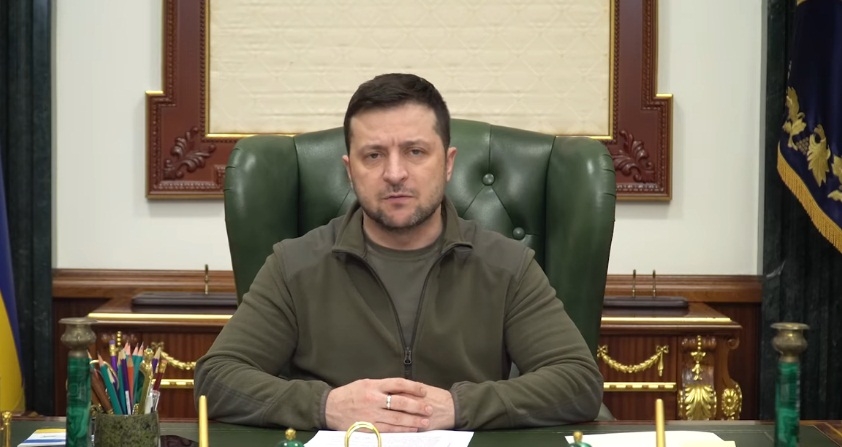
Does Ukraine Have Options?
Ukraine, under martial law since the beginning of the war, has no choice but to continue fighting as any compromise will jeopardise Zelensky’s survival, who is overly obligated to turn Washington’s plans into action. The cumulative aid of more than $100 billion poured into Ukraine and the rhetoric of Ukraine winning this war has emboldened Zelensky, giving him an unrealistic hope of defeating Russia to get back his entire territory; hence, he refuses to talk to Putin.
Ukraine has lost more than 15 per cent of its territory in this war, which has also displaced six million-plus people internally, sent nearly eight million refugees outside the country, inflicted significant casualties and destroyed half of its energy infrastructure.
Regaining lost territory from the Russians will be difficult, if not impossible. They seem to be digging in for a protracted war, irrespective of the military resources provided by NATO, because if Russia has found it difficult to make decisive progress, the situation for Ukraine can be no different.
China a Wild Card Entry?
The US is speculating about Chinese military hardware support to Russia in view of the ‘Strategic Partnership with No Limit’. It is also relevant in the context of the Sino-Russian footprints in the Arctic region and the North Atlantic Ocean. It has threatened China with sanctions. China, however, is unlikely to compromise its largest consumer market in the US and the EU; hence, it will make its own choice.
It is mocking the US as morally not qualified to issue orders, having sent billions of dollars in aid to fuel this war and its history of invasions in Iraq and Libya. It is also keeping the US guessing by offering a peace proposal, which it knows the US/Ukraine will never agree to. China has sent its top foreign policy official, Wang Yi, to Russia to keep the possibility of an agreement to end the war alive.
How the Ukraine War May Pan Out
A hard tug-of-war in an otherwise stalemate situation in Ukraine will continue with each side hoping for better gains to secure a better position for talks, putting on a brave front despite suffering war fatigue.
Globally, the people want the war to end, as it is hurting everyone by inflationary pressures, unprecedented energy and food crisis, especially those who have no relation with this war.
Russia is speeding up its offensive before additional arsenal makes its task of achieving strategic objectives even more difficult. On the other side, the political hierarchy of the US-led NATO finds the ongoing proxy war, without sharing any burden of body bags, as a convenient option to weaken Russia and keep the war restricted to Ukraine.
NATO seems inclined to let Finland join it to secure its northern flank, even if Sweden’s bid is being blocked by Turkey. Russia, therefore, might end up with an extension of its direct land border with NATO by more than 1,000 km with Finland joining the alliance as the final end state, an outcome which it wanted to avoid.
NATO’s military backing of Ukraine may not secure victory, but it might lead it to long-term changes in its territorial boundary, an endless proxy war, and a consistent long-term Russian threat.
Zelensky has no choice but to continue fighting the war, with western propaganda depicting him as the undisputed winner, as long as the US desires. Pentagon professionals know that ultimately Ukraine will have to make some compromises to its territorial integrity, as it is not possible to fully evict the Russians from there. But NATO would like to delay such an outcome till as late as possible.
(A former DG Infantry of the Indian Army, the author is a strategic and security analyst who is also on the faculty of The United Service Institution of India. He can be reached by email at shashiasthana29@gmail.com)


